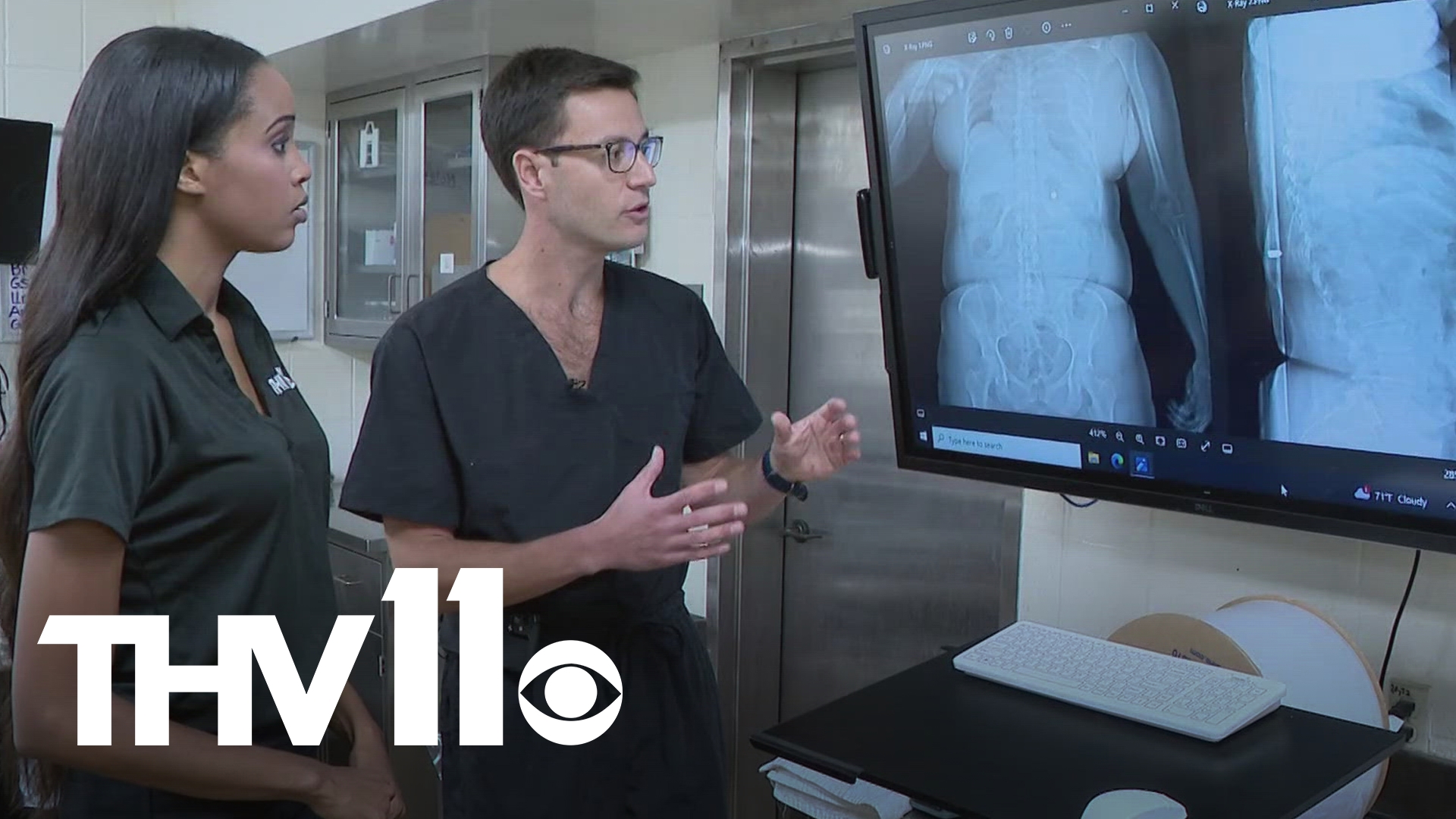LITTLE ROCK, Ark. — When crimes happen the people who work for the Arkansas State Crime Lab are typically part of the team who regularly helps bridge the gap between victims and justice— be it sexual assault cases, shootings, or homicides
However, when guns are used in crimes, it's the firearms section that works diligently to determine what exactly happened during a victim’s final moments.
Chief Firearm and Tool Mark Examiner, Rebecca Mullen, at the Arkansas State Crime Lab explained that their their main goal is to determine what was used in crimes.
"Was a bullet or a cartridge case used in a crime scene, or a bullet that's recovered from a gunshot victim fired in a particular firearm or not," she described.
This work is known as ballistics—or the study of projectiles and firearms.
It keeps the crime lab very busy, but it is a critical part of solving gun-related crimes in Arkansas.
“We can take a bullet, examine it, weigh it,” she said. “We measure the diameter of its base and determine its land and groove impression, which are called class characteristics."
The crime lab shared that the ammunition sent to the firearms section for testing and examination typically comes from law enforcement and crime scenes.
Oftentimes, they work hand in hand with the medical examiner section to piece together a victim’s final moments. This includes using thorough machinery prior to performing autopsies.
"What this full body X-ray does for the forensic pathologist, is that it provides the forensic pathologist with initial information as far as obvious natural disease, any obvious natural injuries, and any foreign objects like a bullet or a projectile,” explained Theodore Brown the Chief Medical Examiner and Director of the Arkansas State Crime Lab.
He also shared how their machinery ensures that bullets can be properly removed and preserved for autopsy examinations.
“We look at the gunshot wound defects which are the entrance gunshot wounds and the exit gunshot wounds. [Which is important] because it tells us the trajectory of the gunshot wound defects,” he described.
All of this helps the crime lab piece together a victim's final moments.
Oftentimes, removed bullets are then sent to the firearms section for analysis and entered into what's called the National Integrated Ballistic Information Network, or NBIN system.
This system uses filters and imaging to help solve crimes.
"A large number of firearms are submitted to the lab for entry into our NBIN database,” Mullen said. “That database can link crimes in which the same gun was used, and provides more information to the law enforcement agencies."
It's a long, and meticulous process that doesn't just include analyzing physical evidence, but even involves finding potential leads when evidence or weapons used may be undetermined at the start of the examination.
Mullen said that while this isn't glamorous work— it is meaningful work.
Both the firearms section and medical examiner sections often play pivotal roles in providing pathways to the truth.
“It's definitely a good feeling knowing that we're providing some information that may help lead an investigation," added Mullen.
In 2023, the firearm section received 2,452 total submitted cases. Of that— 267 were homicides.

